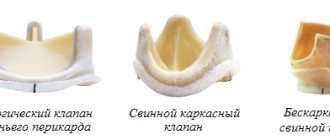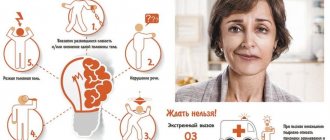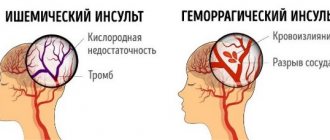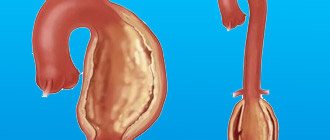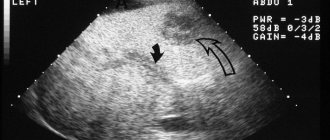Despite the frequent use of the term “hypovolemia,” many doctors do not have an accurate idea of its meaning. Obviously, this is why they consider it possible not to use objective criteria when voicing this diagnosis; as a result, it turns into a subjective opinion. Moreover, slang expressions such as “underfilled” or “overfilled” are used in relation to the patient, referring to defects in infusion therapy.
Meanwhile, a violation of the patient’s volemic status is always a very serious symptom of trouble in the body, requiring objective confirmation and immediate therapeutic response, since volemia is the foundation of circulation, and therefore of exchange, that is, the very existence of the body. That is why a free interpretation of volemia can and does lead to great losses for the patient.
The terms “hypovolemia” and “hypervolemia” imply the presence of normovolemia, in comparison with which a decrease or increase in blood volume is determined. The search for the very concept of “normovolemia” continued for more than a hundred years, and now, finally, an almost generally accepted decision has appeared to consider normal only that volume of circulating blood (CBV), which in size corresponds to the capacity of the vascular bed. In this case, relaxed hemodynamics and breathing are observed, that is, there is no pronounced tachycardia, peripheral vasospasm, or increased respiratory movements.
Content:
- Causes and mechanism of development
- Classification
- Signs of hypovolemic disorder
- Treatment of hypovolemia
Hypovolemia is a decrease in blood volume with the development of alcohol withdrawal syndrome. This process occurs due to the recombination of fluid, due to its transition from the venous bed into the cells and the space between them. This phenomenon occurs during the accumulation of toxic substances inside tissues due to dysfunction of the enzyme system, coronary artery disease, and poor functioning of organs. In addition to perfusion problems, a decrease in circulating blood volume (CBV) is manifested by an inadequate ratio of systolic and diastolic blood pressure and a drop in cardiac output. Developing acute pathology is life-threatening and requires immediate medical attention.
Prevention measures
To prevent hypovolemia, timely diagnosis of the causes of its occurrence and rapid replenishment of the circulating blood deficiency are required. For diarrhea and vomiting, frequent and fractional drinking of plain water is necessary; if a decrease in pressure is noted, the patient requires infusion therapy.
When performing surgical interventions, preparation is required - the introduction of saline or plasma-substituting solutions. Immediately after surgery, it is necessary to determine the degree of blood loss and restore its deficiency using infusion therapy.
We recommend reading about cerebral hypoxia. From the article you will learn about the causes of cerebral hypoxia, acute and chronic forms, as well as methods for diagnosing and treating this pathology. And here is more information about the treatment of dyslipidemia.
A decrease in circulating blood volume is called hypovolemia. It occurs with a normal, increased, or decreased ratio of red blood cells to plasma. These conditions are characterized by progressive disruption of blood circulation and nutrition of internal organs, myocardium, lungs and brain. If solutions are not administered in a timely manner, hypovolemic shock develops with an unfavorable prognosis. Emergency intravenous infusion therapy is indicated for treatment.
Reasons and mechanism of formation
The pathological hypovolemic process is based on severe dehydration.
Leads to it:
- Vomiting, characteristic of withdrawal syndrome after binge drinking.
- Diarrhea, with the help of which the body cleanses itself of alcohol toxins.
- Liver diseases characteristic of alcoholism (toxic hepatitis and cirrhosis). In this case, non-functional leakage of plasma into the intercellular space occurs due to a decrease in the oncotic pressure of the blood.
- Insufficient intake of fluid and protein into the body.
Hypovolemia is preceded by increased venous and hydrostatic pressure in small arteries, reflecting the negative influence of factors predisposing to a painful condition. Secondarily, the permeability of the vascular wall increases. Sweating of blood through arteries and veins leads to its general deficiency.
The body tries to compensate by:
- Producing the required amount of plasma.
- Slowing venous return.
- Spasms of small vessels.
The protective reaction allows you to maintain the activity of the brain and heart in a relatively normal state for some time and avoid circulatory complications.
Possible consequences
There are two main complications: coma and death. Both develop in severe forms of the disorder. In milder cases, the body suffers from constant harmful influences. Strength is being undermined from within. If the problem has existed for a long time, the following violations are likely:
- Ischemic processes in the brain. Risk of stroke.
- Insufficient supply of oxygen to the heart. High risk of heart attack. And in the early stages - ischemic heart disease, angina pectoris.
- Impaired intellectual abilities.
- Severe asthenic syndrome with fatigue and weakness.
Classification
The types of hypovolemia that doctors of different specializations have to deal with have several options. They are due to the dependence of the ratio of plasma and blood elements (hematocrit).
On this basis, the following types of violations are distinguished:
- Normocythemic. The volume is reduced with a normal hematocrit number.
- Oligocythemic. The amount of plasma is not changed, and blood cells are small.
- Polycythemic. BCC is low, and hematocrit, on the contrary, is high.
Narcologists most often encounter the polycythemic variant. This is what characterizes intoxication with severe vomiting and diarrhea.
To prescribe therapy, the doctor also needs to find out whether the patient has absolute or relative hypovolemia. Therefore, when making a diagnosis, the doctor examines the patient very carefully, analyzes data from laboratory tests and other special diagnostic methods. This information is required to adjust therapy.
Absolute hypovolemia occurs against the background of blood deficiency in the vascular bed. It develops due to loss of plasma and lack of fluid intake into the body. In this case, the urinary system works normally.
Relative hypovolemia is characterized by sweating of the liquid part into the intervascular space of the body. Against this background, the BCC remains normal, or even higher than normal values. This condition is also a manifestation of toxic syndrome in alcoholism.
Signs of hypovolemic disorder
Symptoms of the disorder depend on its severity.
In the practice of narcology, the following stages of hypovolemia are distinguished:
- Easy. Minor fluid losses (up to 20% of bcc) are accompanied by a decrease in blood pressure, increased heart rate 10-15 beats higher than normal, and slight shortness of breath. The patient is pale, complains of weakness, dry mucous membranes, dizziness, and attacks of nausea.
- Average. The patient loses up to 40% of his total blood volume. In this case, the pressure is sharply reduced (below 90 mm Hg) and the pulse is above 120-130 beats per minute. Breathing is sharply rapid and intermittent. Externally, pallor and cyanosis of the skin in the area of the nasolabial triangle are revealed. There is severe sweating, lethargy, and decreased urine output due to severe thirst.
- Heavy. With a large-scale decrease in blood volume (above 40%), a critical drop in blood pressure is detected. The pulse is barely detectable and reaches 150 or more beats per minute. No urine is released. The patient's appearance indicates that he is in critical condition. There is deathly pale skin, a pointed face, sunken cheeks, and an unconscious state.
Loss of BCC is often accompanied by:
- Hypoglycemia is a serious complication of alcohol withdrawal syndrome. A harbinger of the development of hypoglycemia is any kind of liver disease, a decrease in glycogen reserves, and poor non-caloric nutrition.
- Hyponatremia is a disorder most often found in patients who abuse low-alcohol drinks (cocktails, beer). In this condition, peripheral edema occurs in combination with hypovolemia.
- Hypernatremia is a condition that occurs with encephalopathy, acute liver failure, and a clear deficiency in the amount of circulating blood.
- Hypomagnesemia is a deficiency of magnesium inside cells in people with alcoholism, regardless of its content in the plasma. The most common symptoms: general weakness of the body and drowsiness. The risk of seizures and heart problems (palpitations) may increase.
- Hypokalemia. In people suffering from alcoholism, as a rule, potassium deficiency is detected in the body, even if its content in the blood plasma is at normal levels. In combination with an overexcited nervous system, the lack of this element leads to irreparable disturbances in the functioning of the heart with a threat to life. Anyone suffering from alcohol withdrawal syndrome is prescribed potassium supplements.
This pathology manifests itself:
- Fatigue quickly.
- Depression.
- Attacks of tachycardia.
- Muscle weakness.
Alcohol withdrawal syndrome may be accompanied by metabolic acidosis, which occurs due to the accumulation in the body of breakdown products of alcohol and other substances of pathological metabolism, in the process of tissue hypoxia and respiratory alkalosis.
Forecasts
Foggy. With proper help, or if the pathological process proceeds relatively easily - positive. But decompensation can occur at any time.
The prospects for severe injuries are much worse. Although here everything is ambiguous and depends on the moment of the start of therapy.
Hypovolemia is a syndrome inherent in many dangerous conditions. It is not him who needs to be treated. The main forces should be directed to the fight against the original source. And this must be done as quickly as possible. In this case, there is every chance of recovery without consequences.
Treatment of hypovolemia
The main task of the doctor in treating this pathology is to eliminate the deficit in blood volume.
Additionally required:
- Strengthen the work of the heart.
- Improve oxygen supply to tissues.
- Remove toxins.
- Carry out symptomatic pharmacotherapy for acute disorders.
To achieve these goals, infusion-drip therapy is used.
Depending on the stage of the process, droppers are prescribed containing:
- Crystalloids, isotonic solution and 5% glucose.
- Reamberin, Reosorbilact.
- Dextran solution, Ringer.
- Plasma substitutes.
Cardiac and respiratory stimulants, hepatoprotectors, nootropics, and metabolic agents are added to the droppers.
In particularly severe cases, red blood cells are used and a blood transfusion is performed.
To prevent the development of hypovolemia in alcoholism, timely treatment of this pathology in a drug treatment clinic, psychotherapy, coding and rehabilitation is required.
Literature:
- Prehospital correction of hypovolemia / O. A. Tsarev; State budgetary educational institution of higher education prof. education "Saratov State. Medical University named after V. I. Razumovsky" Ministry of Health of the Russian Federation. — Saratov: Saratov State Publishing House. Medical University, 2015. - 141 p.
- From symptom to diagnosis: a guide for doctors / Scott Stern, Adam Saifu, Dayne Altcorn. - Moscow: GEOTAR-Media, 2008. - 810 p.
The text was checked by expert doctors: Head of the socio-psychological service of the Alkoklinik MC, psychologist Yu.P. Baranova, L.A. Serova, a psychiatrist-narcologist.
CAN'T FIND THE ANSWER?
Consult a specialist
Or call: +7 (495) 798-30-80
Call! We work around the clock!

